The 1st Annual Cannabis Quality Conference & Expo featured dynamic discussions both in the sessions as well as on the exhibit floor. Take a look at some of the highlights from this year’s conference and expo.
All image credit: amyBcreative

The 1st Annual Cannabis Quality Conference & Expo featured dynamic discussions both in the sessions as well as on the exhibit floor. Take a look at some of the highlights from this year’s conference and expo.
All image credit: amyBcreative
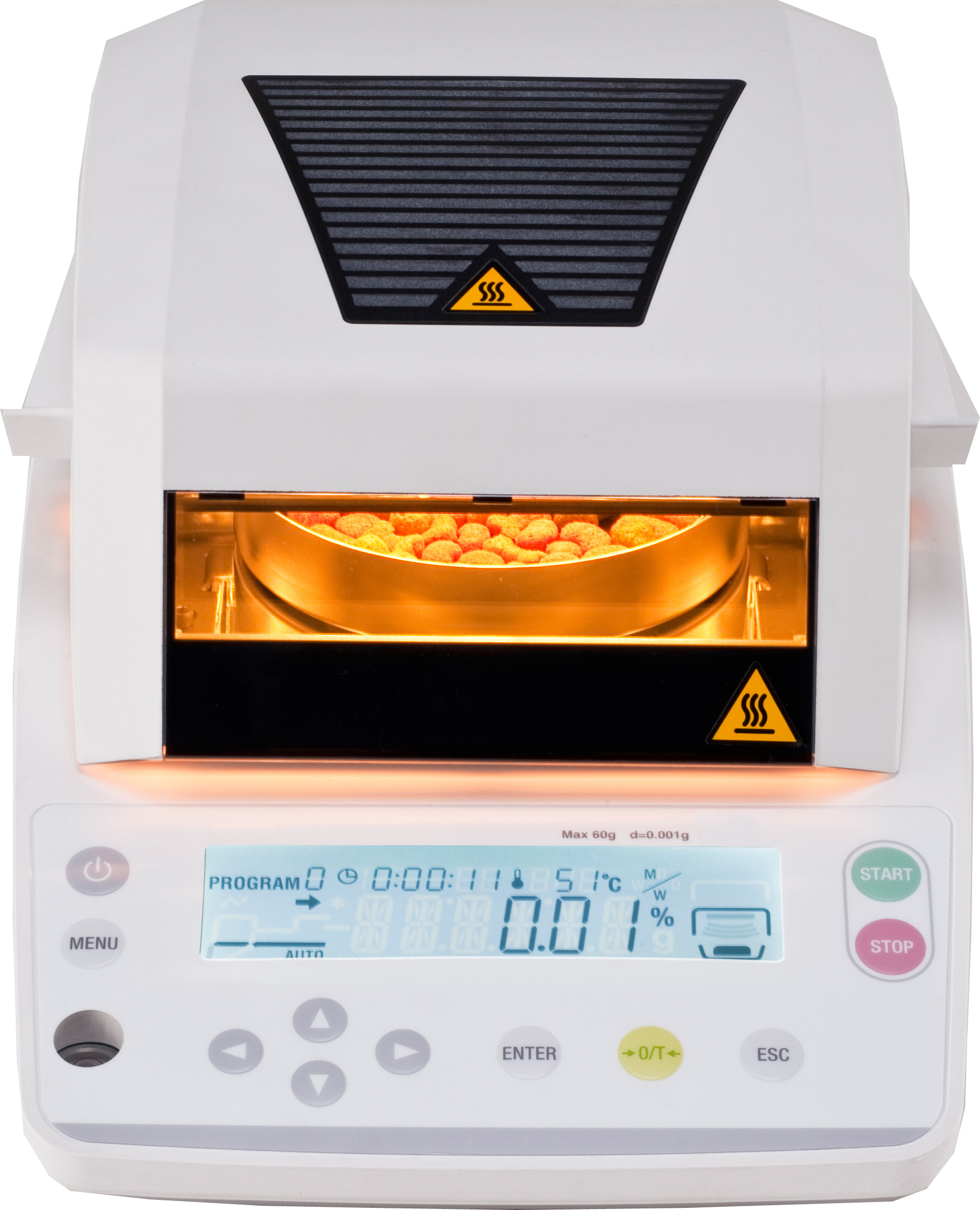
The cannabis industry is growing exponentially, and the use of cannabis for medical purposes is being adopted across the nation. With this boom in cannabis consumers, there has been an increasing need for knowledge about the product.
The role of testing labs has become crucial to the process, which makes owning and operating a lab more lucrative. Scientists testing for potency, heavy metals, pesticides, residual solvents, moisture, terpene profile, microbial and fungal growth, and mycotoxins/aflatoxins are able to make meaningful contributions to the medical industry by making sure products are safe, while simultaneously generating profits and a return on investment.
Here are the key testing instruments you need to conduct these critical analyses. Note that cannabis analytical testing requirements may vary by state, so be sure to check the regulations applicable to the location of your laboratory.

The most important component of cannabis testing is the analysis of cannabinoid profiles, also known as potency. Cannabis plants naturally produce cannabinoids that determine the overall effect and strength of the cultivar, which is also referred to as the strain. There are many different cannabinoids that all have distinct medicinal effects. However, most states only require testing and reporting for the dry weight percentages of delta-9-tetrahydrocannabinol (Δ9-THC) and cannabidiol (CBD). It should be noted that delta-9-tetrahydrocannabinolic acid (Δ9-THCA) can be converted to THC through oxidation with heat or light.
For potency testing, traditional high-performance liquid chromatography (HPLC) is recommended and has become the gold standard for analyzing cannabinoid profiles. Look for a turnkey HPLC analyzer that delivers a comprehensive package that integrates instrument hardware, software, consumables and proven HPLC methods.

Different types of metals can be found in soils and fertilizers, and as cannabis plants grow, they tend to draw in these metals from the soil. Heavy metals are a group of metals considered to be toxic, and the most common include lead, cadmium, arsenic and mercury. Most labs are required to test and confirm that samples are under the allowable toxic concentration limits for these four hazardous metals.
Heavy metal testing is performed by inductively coupled plasma mass spectrometry (ICP-MS). ICP-MS uses the different masses of each element to determine which elements are present within a sample and at what concentrations. Make sure to include accompanying software that provides assistant functions to simplify analysis by developing analytical methods and automatically diagnosing spectral interference. This will provide easy operation and analytical results with exceptionally high reliability.
To reduce running costs, look for a supporting hardware system that reduces the consumption of argon gas and electricity. For example, use a plasma ignition sequence that is optimized for lower-purity argon gas (i.e., 99.9% argon as opposed to more expensive 99.9999%).
The detection of pesticides in cannabis can be a challenge. There are many pesticides that are used in commercial cannabis grow operations to kill the pests that thrive on the plants and in greenhouses. These chemicals are toxic to humans, so confirming their absence from cannabis products is crucial. The number of pesticides that must be tested for varies from state to state, with Colorado requiring only 13 pesticides, whereas Oregon and California require 59 and 66 respectively. Canada has taken it a step further and must test for 96 pesticides, while AOAC International is developing methods for testing for 104 pesticides. The list of pesticides will continue to evolve as the industry evolves.
Testing for pesticides is one of the more problematic analyses, possibly resulting in the need for two different instruments depending on the state’s requirements. For a majority of pesticides, liquid chromatography mass spectrometry (LCMS) is acceptable and operates much like HPLC but utilizes a different detector and sample preparation.

Pesticides that do not ionize well in an LCMS source require the use of a gas chromatography mass spectrometry (GCMS) instrument. The principles of HPLC still apply – you inject a sample, separate it on a column and detect with a detector. However, in this case, a gas (typically helium) is used to carry the sample.
Look for a LC-MS/MS system or HPLC system with a triple quadrupole mass spectrometer that provides ultra-low detection limits, high sensitivity and efficient throughput. Advanced systems can analyze more than 200 pesticides in 12 minutes.
For GCMS analysis, consider an instrument that utilizes a triple quadrupole mass spectrometer to help maximize the capabilities of your laboratory. Select an instrument that is designed with enhanced functionality, analysis software, databases and a sample introduction system. Also include a headspace autosampler, which can also be used for terpene profiles and residual solvent testing.
Residual solvents are chemicals left over from the process of extracting cannabinoids and terpenes from the cannabis plant. Common solvents for such extractions include ethanol, butane, propane and hexane. These solvents are evaporated to prepare high-concentration oils and waxes. However, it is sometimes necessary to use large quantities of solvent in order to increase extraction efficiency and to achieve higher levels of purity. Since these solvents are not safe for human consumption, most states require labs to verify that all traces of the substances have been removed.
Testing for residual solvents requires gas chromatography (GC). For this process, a small amount of extract is put into a vial and heated to mimic the natural evaporation process. The amount of solvent that is evaporated from the sample and into the air is referred to as the “headspace.” The headspace is then extracted with a syringe and placed in the injection port of the GC. This technique is called full-evaporated technique (FET) and utilizes the headspace autosampler for the GC.
Look for a GCMS instrument with a headspace autosampler, which can also be used for pesticide and terpene analysis.
Terpenes are produced in the trichomes of the cannabis leaves, where THC is created, and are common constituents of the plant’s distinctive flavor and aroma. Terpenes also act as essential medicinal hydrocarbon building blocks, influencing the overall homeopathic and therapeutic effect of the product. The characterization of terpenes and their synergistic effect with cannabinoids are key for identifying the correct cannabis treatment plan for patients with pain, anxiety, epilepsy, depression, cancer and other illnesses. This test is not required by most states, but it is recommended.
The instrumentation that is used for analyzing terpene profiles is a GCMS with headspace autosampler with an appropriate spectral library. Since residual solvent testing is an analysis required by most states, all of the instrumentation required for terpene profiling will already be in your lab.
As with residual solvent testing, look for a GCMS instrument with a headspace autosampler (see above).
Most states mandate that cannabis testing labs analyze samples for any fungal or microbial growth resulting from production or handling, as well as for mycotoxins, which are toxins produced by fungi. With the potential to become lethal, continuous exposure to mycotoxins can lead to a buildup of progressively worse allergic reactions.
LCMS should be used to qualify and identify strains of mycotoxins. However, determining the amount of microorganisms present is another challenge. That testing can be done using enzyme linked immunosorbent assay (ELISA), quantitative polymerase chain reaction (qPCR) or matrix-assisted laser desorption/ionization time-of-flight mass spectrometry (MALDI-TOF MS), with each having their advantages and disadvantages.
For mycotoxin analysis, select a high-sensitivity LC-MS/MS instrument. In addition to standard LC, using an MS/MS selective detector enables labs to obtain limits of detection up to 1000 times greater than conventional LC-UV instruments.
For qPCR and its associated needs, look for a real-time PCR amplification system that combines thermal cyclers with optical reaction modules for singleplex and multiplex detection of fluorophores. These real-time PCR detection systems range from economical two-target detection to sophisticated five-target or more detection systems. The real-time detection platform should offer reliable gradient-enabled thermal cyclers for rapid assay optimization. Accompanying software built to work with the system simplifies plate setup, data collection, data analysis and data visualization of real-time PCR results.
Moisture content testing is required in some states. Moisture can be extremely detrimental to the quality of stored cannabis products. Dried cannabis typically has a moisture content of 5% to 12%. A moisture content above 12% in dried cannabis is prone to fungal growth (mold). As medical users may be immune deficient and vulnerable to the effects of mold, constant monitoring of moisture is needed. Below a 5% moisture content, the cannabis will turn to a dust-like texture.
The best way to analyze the moisture content of any product is using the thermogravimetric method with a moisture balance instrument. This process involves placing the sample of cannabis into the sample chamber and taking an initial reading. Then the moisture balance instrument heats up until all the moisture has been evaporated out of the sample. A final reading is then taken to determine the percent weight of moisture that was contained in the original sample.

Look for a moisture balance that offers intuitive operation and quick, accurate determination of moisture content. The pan should be spacious enough to allow large samples to be spread thinly. The halogen heater and reflector plate should combine to enable precise, uniform heating. Advanced features can include preset, modifiable measurement modes like automated ending, timed ending, rapid drying, slow drying and step drying.
Another method for preventing mold is monitoring water activity (aW). Very simply, moisture content is the total amount of water available, while water activity is the “free water” that could produce mold. Water activityranges from 0 to 1. Pure water would have an aW of 1.0. ASTM methods D8196-18 and D8297-18 are methods for monitoring water activity in dry cannabis flower. The aW range recommended for storage is 0.55 to 0.65. Some states recommend moisture content to be monitored, other states monitor water activity, and some states such as California recommend monitoring both.
As you can see, cannabis growers benefit tremendously from cannabis testing. Whether meeting state requirements or certifying a product, laboratory testing reduces growers’ risk and ensures delivery of a quality product. As medicinal and recreational cannabis markets continue to grow, analytical testing will ensure that consumers are receiving accurately
labeled products that are free from contamination. That’s why it is important to invest in the future of your cannabis testing lab by selecting the right analytical equipment at the start of your venture.

Tell me that you can’t relate to this story.
You’re sitting down to dinner at a restaurant about ten minutes from where you work, finally relaxing after a tough day. You’ve set your environmental alerts on your plants; you have that peace of mind that the technology promised and you know that if anything goes wrong you’ll get notified immediately. As you’re looking at the menu, you receive an alert telling you that the temperature in one of your 2,000 square foot grow rooms has gone out of the safe range. Your mind starts to race, “It’s week seven, I’ve got 500 plants one week away from harvest, that’s 200 pounds of cannabis worth about $150,000-$200,000. Oh my God, what am I going to do?”
You’re doing all this at the dinner table and even though you’re not in a state of panic, you are extremely concerned. You need to figure out what’s going on. You check the graphing and see that over the past hour your humidity dropped and your temperature is gradually going up. Within the past ten minutes, the temperature has gone to 90 degrees. Your numbers tell you that the temperature in the room with $200,000 of cannabis is going up about five degrees every three minutes.
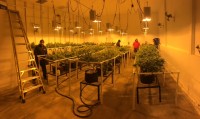
“I see this trend and can’t figure it out,” the grower relates. “Normally, the HVAC kicks on and I’d begin to see a downward trend on the graphs. I pre-set my trigger for 90 degrees. But, I’m not seeing that. What I AM seeing is the temperature gradually and consistently getting warmer without the bounce-back that I would expect once the HVAC trigger was hit. All I know is I better find out what’s causing all this and I better find out fast or my entire crop is gone.”
You go through the rest of the checklist from LUNA and you see that the lights are still on. Now, you’re starting to sweat because if the temperature in that room hits 130 and stays there for more than twenty minutes, you’re losing your entire crop. You have to walk in your boss’s office the next day and explain why, after all the time and money you put in over the past seven weeks, not only is all that money gone but so is the $200,000 he is counting on to pay salaries, expenses, and bank loans.
This is something you’ve been working on for seven straight weeks and if you don’t make the right decision, really quickly, when that room hits 130 degrees here’s what happens.
“My equipment starts to fail,” our grower continues. “The crop literally burns as the oils dry up and the crop is worthless. At 130 degrees, my grow lights essentially start to melt. All you can think of is that temperature going up five degrees every three minutes and you’re ten minutes from your facility. I need to leave that restaurant right now, immediately, because even if I get there in ten minutes the temperature is going to be almost 120 degrees while I’ve been sitting here trying to figure out what’s wrong.”
You run out to your car and you speed back to the facility. The grow room is now 125 degrees, you have maybe three or four minutes left to figure things out before you flush $200,000 down the drain. The first thing you do is turn off the grow lights because that’s your primary source of heat. Then, you check your HVAC panel and you realize it malfunctioned and shorted out. There’s the problem.
The real toll is the human cost. Once this happens, no grower ever wants to leave and go home or even go to dinner. It’s a horrible toll. It’s the hidden cost we don’t talk about. The grower opens up with his own personal experience.“This system allows the grower to step back and still feel confident because you’re not leaving your facility to another person,”
“You think about the burden on the person that you bring in to replace you while you’re out of town and then you think about the burden on you if something goes wrong again. And you decide, it’s not worth it. The anxiety, the fear that it will happen again, it’s not worth it. So, you don’t go. I didn’t even see my sister’s new baby for eight months.”
Your desire to see your family, your desire to have a normal life; all of that goes out the window because of your desire to be successful in your job. It outweighs everything.
This is every grower. It’s why many farmers never leave their property. It just becomes a normal way of living. You just repeat it so much that you don’t even think about it. Why go on vacation if your stress level is higher than it is if you’re home. You’re constantly worried about your farm or your facility. The only way to escape it is to not go away at all.
“This system allows the grower to step back and still feel confident because you’re not leaving your facility to another person,” he tells us. “You don’t realize how stressful a lifestyle you live is until you step back and look at it. Or, if you have an alert system that allows you to pull back. That’s when you realize how difficult your life is. Otherwise, it just seems normal.”
As AI technology expands its footprint into agriculture, there will be more tools to help mediate situations like this; more tools to give you a more normal life. It’s one of the reasons we got into the business in the first place.
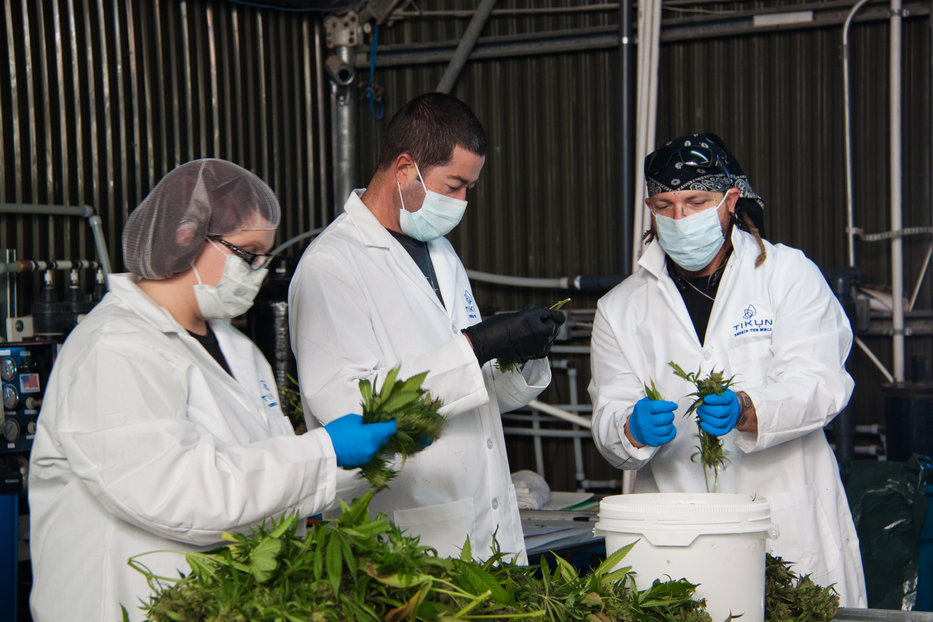
Mold is ubiquitous in nature and can be found everywhere.1 Cannabis growers know this all too well – the cannabis plant, by nature, is an extremely mold-susceptible crop, and growers battle it constantly.
Of course, managing mold doesn’t mean eradicating mold entirely – that’s impossible. Instead, cultivation professionals must work to minimize the amount of mold to the point where plants can thrive, and finished products are safe for consumption.
Let’s begin with that end in mind – a healthy plant, grown, cured and packaged for sale. In a growing number of states, there’s a hurdle to clear before the product can be sold to consumers – state-mandated testing.
So how do you ensure that the product clears the testing process within guidelines for mold? And what tools can be employed in biological warfare?
It helps to first understand how the cannabis plant becomes an optimal environment.
The cannabis flower was designed to capture pollen floating in the air or brought by a pollinating insect.

Once a mold spore has landed in a flower, the spore will begin to grow. The flower will continue to grow as well, and eventually, encapsulate the mold. Once the mold is growing in the middle of the flower, there is no way to get rid of it without damaging the flower.
The types of spores found in or around a plant can make or break whether mold will end with bad product.
Aspergillus for example, is a mold that can produce mycotoxins, which are toxic to humans2. For this reason, California has mandatory testing3for certain aspergillus molds.
Another example, Basidiospores, are found outside, in the air. These are spores released from mushrooms and have no adverse effects on cannabis or a cannabis cultivation facility.
Fungi like powdery mildew and botrytis (PM and Bud Rot) typically release spores in the air before they are physically noticed on plants. Mold spores like these can survive from one harvest to the next – they can be suspended in the air for hours and be viable for years.
Different types of spores – the reproductive parts of mold – get released from different types of mold. Similar to plants and animals, mold reproduces when resources are deemed sufficient.
The opposite is also true that if the mold is under enough stress, such as a depleting nutrient source, it can be forced into reproduction to save itself.4
In the end, mold spores are released naturally into the air for many reasons, including physical manipulation of a plant, which, of course, is an unavoidable task in a cultivation facility.5
Because of the almost-constant physical manipulation of plants that happen inside its walls, a grow’s trimming areas typically have the highest spore counts. Even the cleanest of plants will release spores during trimming.
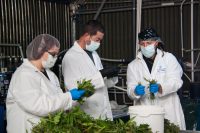
These rooms also have the highest risk for cross contamination, since frequently, growers dry flower in the same room as they trim. Plus, because trimming can be labor intensive, with a large number of people entering and leaving the space regularly, spores are brought in and pushed out and into another space.
The prevalence and ubiquitous nature of mold in a cannabis facility means that the fight against it must be smart, and it must be thorough.
By incorporating an upstream approach to facility biosecurity, cultivators can protect themselves against testing failures and profit losses.
Biosecurity must be all encompassing, including everything from standard operating procedures and proper environmental controls, to fresh air exchange and surface sanitation/disinfection.
One of the most effective tactics in an upstream biosecurity effort is fungal monitoring.
Determining the load or amount of mold that is in a facility is and always will be common practice. This occurs in a few ways.
Post-harvest testing is in place to ensure the safety of consumers, but during the growing process, is typically done using “scouting reports.” A scouting report is a human report: when personnel physically inspect all or a portion of the crop. A human report, unfortunately, can lead to human error, and this often doesn’t give a robust view of the facility mold picture.
Another tool is agar plates. These petri dishes can be opened and set in areas suspected to have mold. Air moves past the plate and the mold spores that are viable land on the dishes. However, this process is time intensive, and still doesn’t give a complete picture.
Alternatively, growers can use spore traps to monitor for mold.
Spore traps draw a known volume of air through a cassette.6 The inside of the cassette is designed to force the air toward a sticky surface, which is capable of capturing spores and other materials. The cassette is sent to a laboratory for analysis, where they will physically count and identify what was captured using a microscope.
Spore trap results can show the entire picture of a facility’s mold concerns. This tool is also fast, able to be read on your own or sent to a third party for quick and unbiased review. The information yielded is a useful indicator for mold load and which types are prevalent in the facility.
What’s going on inside of a facility has a direct correlation to what’s happening outside, since facility air comes infromthe outside. Thus, spore traps are most effective when you compare a trap inside with one set outside.
When comparing the two, you can see what the plants are doing, view propagating mold, and understand which of the spore types are only found inside.
Similar to its use in homes and businesses for human health purposes, monitoring can indicate the location of mold growth in a particular area within a facility.
These counts can be used to determine the efficacy of cleaning and disinfecting a space, or to find water leaks or areas that are consistently wet (mold will grow quickly and produce spores in these areas).
Utilizing spore traps for regular, facility-wide mold monitoring is advantageous for many reasons.
One example: Traps can help determine critical control points (CCP) for mold.
 What does this look like? If the spore count is two times higher than usual, mitigating action needs to take place. Integrated Pest Management (IPM) strategies like cleaning and disinfecting the space, or spraying a fungicide, are needed to bring the spore count down to its baseline.
What does this look like? If the spore count is two times higher than usual, mitigating action needs to take place. Integrated Pest Management (IPM) strategies like cleaning and disinfecting the space, or spraying a fungicide, are needed to bring the spore count down to its baseline.
For example, most facilities will see a spike in spore counts during the times of initial flower production/formation (weeks two to three of the flower cycle).
Seasonal trends can be determined, as well, since summer heat and rain will increase the mold load while winter cold may minimize it.
Fungal monitoring – especially using a spore trap – is a critical upstream step in a successful IPM strategy. But it’s not the only step. In fact, there are five:
Each step must be followed to succeed in the battle against mold.
Of course, in the battle, there may be losses. If you experience a failed mandatory product testing result, use the data from the failure to fix your facility and improve for the future.
The data can be used to determine efficacy of standard operating procedures, action thresholds, and other appropriate actions. Plus, you can add a spore trap analysis for pre- and post- disinfection protocols, showing whether the space was really cleaned and disinfected after application. This will also tell you whether your products are working.
Leveraging all of the tools available will ensure a safe, clean cannabis product for consumers.
References

On July 18, 2019, the Riverside County Sheriff’s Department in California served search warrants at 56 illegal cannabis cultivation sites. This operation was spearheaded by 390 law enforcement personnel, whose mission was to combat the ongoing problem of illegal cannabis cultivation sites throughout California.
The target of the operation was illegal cultivation sites. Individuals or licensed businesses with permits to grow cannabis legally were not affected.
Illegal cultivation is far from just a California problem. For example, if Oregon halted cannabis production today, the state would not experience a shortage as it has a six-year surplus.
The fear for investors and legal growers is that, if some growers turn to the black market to unload excess inventory, federal enforcement will come into play, which will set back the legal cannabis industry to the stone age. Oregon is currently making moves to limit licensure for legal production, but some active licenses may also need to be revoked, which would leave those licensees with vast investment losses. In other words, legalized cannabis’s massive economic market is not without financial problems of its own.
 Several states have legalized recreational cannabis with the intention of reimagining this vast underground market as an above-board business that bolsters the state’s economy via transparent dealings. To date, however, the federal government has refused to budge regarding cannabis’s status as an illegal Schedule 1 substance. This classification puts cannabis on a par with opioids. As such, those states that have legalized recreational cannabis are extremely motivated to keep these businesses on the up and up and not to pique federal interest.
Several states have legalized recreational cannabis with the intention of reimagining this vast underground market as an above-board business that bolsters the state’s economy via transparent dealings. To date, however, the federal government has refused to budge regarding cannabis’s status as an illegal Schedule 1 substance. This classification puts cannabis on a par with opioids. As such, those states that have legalized recreational cannabis are extremely motivated to keep these businesses on the up and up and not to pique federal interest.
One of the tenets of legalizing cannabis is stemming the proliferation of black-market suppliers and minimizing the negative effects that the “war on drugs”has had in minority communities. These positive impetuses have yet to flourish. As a result of the illegal status of cannabis at the federal level, cannabis-legal states are forced to operate as islands.
Generally, taking legally purchased cannabis across state lines – from a legal to an illegal state – is illegal, and this is not only confusing but is also a recipe for complications. This leaves cannabis-legal states vulnerable to black market activity. These pockets of legal recreational cannabis that are popping up around the country loosen the constraints of the cannabis movement while the legality of this movement remains problematic. The results are an environment that’s extremely hospitable to black market activity.
The reality is that – due to supply and demand – cannabis costs about half as much in cannabis-legal states as it does in states in which it’s illegal. Black market growers in legal states destabilize the market. Those legit companies which remain above board, pay their taxes and jump through every legal hoop, cannot compete with black market interlopers who eschew such niceties.
The point made by detractors of legal cannabis isn’t lost on the rest of us – the black market is burgeoning.States that have legalized production have inadvertently made it easier for illegal producers to hide in plain sight, and the line between legal and illegal operations can become blurred. This creates new frustrations for law enforcement and naturally cuts into the legal cannabis trade. The situation has left some opponents to legalization demanding new crackdowns – others characterize such suggestions as amounting to a new war on drugs.
Detractors of legalized cannabis claim the somewhat chaotic effects related to the current patchwork approach to legalization are a result of opening the gates to legalization in the first place. However, putting the genie of legalized recreational cannabis back in the bottle simply isn’t feasible for operational, financial and political reasons. With the proliferation of attendant illegal operations, however, it is becoming more and more clear that leveling the playing field – via some form of federal legalization – is inevitable. The current state-by-state solution leaves too much wiggle room for the illegal transport of cannabis from those states with looser restrictions to those states with tighter protocols. If politics is choosing between the disastrous and the unpalatable, the billion-dollar cannabis conundrum is a great example. The question may no longer be should we legalize cannabis but, instead, how do we legalize cannabis.In other words, we need to find a path forward, and focusing only on the pitfalls that we’ve experienced so far isn’t going to get us where we need to be.
The point made by detractors of legal cannabis isn’t lost on the rest of us – the black market is burgeoning. As such, we have an important decision to make. A blanket prohibition of cannabis may no longer be practicable, so we’re left to choose between legal and overt practices across the board or a hodgepodge of semilegal practices with covert ops in tow. Fostering illegal activity is rarely in our nation’s best interests, which leaves legalizing cannabis at the federal level as possibly the most practicable solution.
 As more states embrace the legalization of recreational cannabis, public health concerns remain an issue. Many of these illegal cultivators use chemicals that are banned in the United States and do not properly dispose of chemicals or waste products that destroy the environment, contaminate drinking water and have the potential to harm or even kill residents and domestic animals. Not only is this activity harmful, growers often steal electricity and water from surrounding residents.
As more states embrace the legalization of recreational cannabis, public health concerns remain an issue. Many of these illegal cultivators use chemicals that are banned in the United States and do not properly dispose of chemicals or waste products that destroy the environment, contaminate drinking water and have the potential to harm or even kill residents and domestic animals. Not only is this activity harmful, growers often steal electricity and water from surrounding residents.
Cobbling together a pastiche of laws, however, inevitably bolsters black market activity and does nothing to help protect public health. Even the staunchest proponents of legalizing cannabis don’t want minors involved in the equation. Additionally, few debate that unchecked usage is a healthy option. Quasi-legislation at the state level (and on a state-by-state basis), however, provides neither a check nor a balance.
The most likely next step for safeguarding public health, for stemming black-market activity, and for generating maximum revenues is toward thoughtful and comprehensive national legalization that comes sooner rather than later. In the meantime, law enforcement should protect the public, legal operations, investors, and the environment from the black market.
The opinions expressed are those of the author and do not necessarily reflect the views of Guidepost Solutions or its clients.
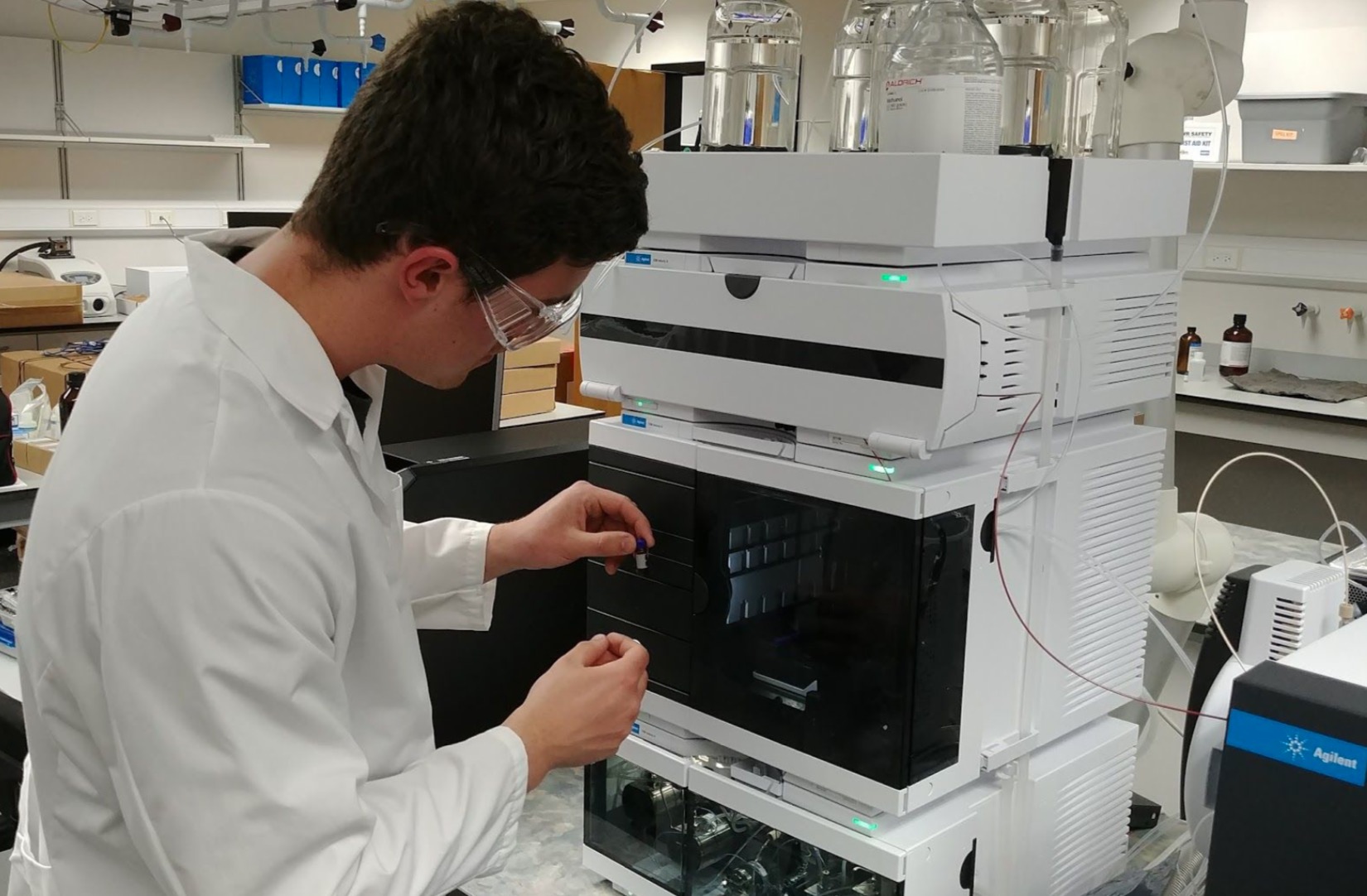
Back in August, Lake Superior State University (LSSU) announced the formation of a strategic partnership with Agilent Technologies to “facilitate education and research in cannabis chemistry and analysis.” The university formed the LSSU Cannabis Center of Excellence (CoE), which is sponsored by Agilent. The facility, powered by top-of-the-line Agilent instrumentation, is designed for research and education in cannabis science, according to a press release.

The LSSU Cannabis CoE will help train undergraduate students in the field of cannabis science and analytical chemistry. “The focus of the new LSSU Cannabis CoE will be training undergraduate students as job-ready chemists, experienced in multi-million-dollar instrumentation and modern techniques,” reads the press release. “Students will be using Agilent’s preeminent scientific instruments in their coursework and in faculty-mentored undergraduate research.”
The facility has over $2 million dollars of Agilent instruments including their UHPLC-MS/MS, UHPLC-TOF, GC-MS/MS, LC-DAD, GC/MS, GC-FID/ECD, ICP-MS and MP-AES. Those instruments are housed in a 2600 square-foot facility in the Crawford Hall of Science. In February earlier this year, LSSU launched the very first program for undergraduate students focused completely on cannabis chemistry. With the new facility and all the technology that comes with it, they hope to develop a leading training center for chemists in the cannabis space.
Dr. Steve Johnson, Dean of the College of Science and the Environment at LSSU, says making this kind of instrumentation available to undergraduate studies is a game changer. “The LSSU Cannabis Center of Excellence, Sponsored by Agilent was created to provide a platform for our students to be at the forefront of the cannabis analytics industry,” says Dr. Johnson. “The instrumentation available is rarely paralleled at other undergraduate institutions. The focus of the cannabis program is to provide our graduates with the analytical skills necessary to move successfully into the cannabis industry.”
![]() Storm Shriver is the Laboratory Director at Unitech Laboratories, a cannabis testing lab in Michigan, and sounds eager to work with students in the program. “I was very excited to learn about your degree offerings as there is a definite shortage of chemists who have experience with data analysis and operation of the analytical equipment required for the analysis of cannabis,” says Shriver. “I am running into this now as I begin hiring and scouting for qualified individuals. I am definitely interested in a summer internship program with my laboratory.”
Storm Shriver is the Laboratory Director at Unitech Laboratories, a cannabis testing lab in Michigan, and sounds eager to work with students in the program. “I was very excited to learn about your degree offerings as there is a definite shortage of chemists who have experience with data analysis and operation of the analytical equipment required for the analysis of cannabis,” says Shriver. “I am running into this now as I begin hiring and scouting for qualified individuals. I am definitely interested in a summer internship program with my laboratory.”
LSSU hopes the new facility and program will help lead the way for more innovation in cannabis science and research. For more information, visit LSSU.edu.

Tilray just did something very interesting. In addition to announcing that it was shipping product to German distributor Cannamedical via its Portuguese facility, it also announced that it had begun outdoor cultivation.
Even more intriguing: the company is claiming that somehow, via its proprietary technology (apparently), this kind of crop will be legit for distribution within the EU medical system.
There is only one problem with this. Outdoor growing does not sound remotely GMP-certified.
Here is the next bit of exciting news. Tilray, apparently, is not the only large Canadian cannabis company now operating in Europe that appears to be trying to get around GMP certifications for medical market penetration. Or appear oblivious to the distinctions in the international (and certainly European market).

And things are a bit smelly on that front, not only in Denmark post CannTrust, but in truth even in Germany, the supposed “Fort Knox” of regulatory consumer and pharmaceutical standards.
In fact, at least according to insiders, there is apparently quite a bit of gray market product sloshing around in the Teutonic medical market. Even though so far, at least not publicly punished for the same, nobody has been caught. Or at least publically reprimanded.
And who is on the hot seat at least according to most of the licensed if not just pre-licensed indie producers and distributors who were contacted for this story? Sure, there are dark horse “start-up” indie violators, but they are not the only problem. Many who talked to CIJ named big public Canadian companies too. And potentially Bedrocan beyond that.
Part of the problem, beyond any kind of deliberate flouting of regulations on the part of many companies who are at least trying to understand them, is that global standards are different. “GMP certifications” of every country, even within a region like Europe, are in fact, not uniform. That is why, for example, the new EU-US MRA agreement had to be signed first regionally and then on a state-by-state level across the EU.
Beyond Germany of course, there are other problems that are coming to the fore.In the medical cannabis space, in particular, right now, that is causing problems simply because many with pharma experience are not hip to the many risks in the cannabis industry itself. On the Canadian, Australian and American side, there is also a lot of bad advice, in particular, coming from consultants who should know better.
To be properly EU and German GMP-certified, one of the required steps is to have German inspectors walk your production floor. It is also not good enough to have “pesticide-free” or national organic certification at the crop cultivation site, and add GMP cert at time of “processing.” That piece of misadvise has been showing up not only in Canada, but Australia too. And creates a nasty reality if not expensive retooling upon entering the legitimate market in Europe, for starters.

In an environment where ex-im is the name of the game, and even the big guys are short of product, compliance is getting granular as smaller players step up to the plate – and many if not most hopeful Canadian producers (in particular) now looking to Europe for sales are not (yet) up to speed.
A big piece of the blame also lies in the lack of proper administration at the federal and state level too – even auf Deutschland. To get a distribution license, a company must actually get three licenses, although there are plenty in the market right now who begin to describe themselves as “distributors” with less than the required certs.
The lack of coordination and communication, including which certs to accept as equivalent and from where is creating a market where those who know how to game the system are.
For example, several people who contacted CIJ, claimed that uncertified product was making its way into Germany via Central and Latin America, through Canada, picking up “GMP cert” along the way. In other words, not actually GMP-certified but labelled fraudulently to make it appear that way.
The same claims were also made by those with on-the-ground industry knowledge in South Africa (Lesotho).
Beyond Germany of course, there are other problems that are coming to the fore. As CIJ recently learned, a firm authorized by the Dutch government to provide cannabis packaging, including for exports, was not GMP certified until July 2019 – meaning that all product they shipped internationally even within Europe before that date potentially has labelling issues. Cue domestic importers. If not regulators.
For those who are taking the time to actually get through the legal registration and licensing process, it is infuriating to see others who are apparently fairly flagrantly buying market position but are in no position to fulfil such obligations. It is even more infuriating for those who intend to meet the requirements of the regulations to realize that the vast amounts spent in consulting fees was actually money paid for inaccurate information.
And the only way ultimately the industry can combat that, is by standing up, as an industry, to face and address the problem.German distributors are so aware of the problem that they are starting to offer gap analysis and specific consulting services to help their import partners actually get compliant.
Government agencies also might be aware of the problems, but they have been reluctant to talk about the same. CIJ contacted both BfArM and the local Länderauthorities to ask about the outdoor grow in Portugal and the lack of GMP cert for a Dutch packager. After multiple run-arounds, including sending this reporter on a wild rabbit chase of federal and state agencies (who all directed us back to BfArm) and an implication by the press officer at BfArM that the foreign press was not used to talking to multiple sources, CIJ was redirected back to state authorities with a few more instructions on which bureau to contact. The state bureau (in Berlin) did not return comments to questions asked by email.
Here is the bottom line that CannTrust has helped expose this summer: the entire global cannabis industry is trying hard to legitimize. Not every company is shady, and there are many who are entering it now who are playing by the rules. But those who are hoping to exploit loopholes (including “name” if not “public” companies) are also clearly in the room.
And the only way ultimately the industry can combat that, is by standing up, as an industry, to face and address the problem.
Editors Note: This is a developing story. CIJ has been contacted by the Dutch Cannabis Agency as it investigates what appears to be an intra-government debate over qualification of EU-GMP cert, acceptance of audit documents and other matters within European countries that appear to have caused much of this confusion with regards to Bedrocan and its packager Fagron. Many reputable, licensed sources within the industry spoke to us on deep background, out of concern that they too would be held liable. That said, so far, nobody can explain why the only licensed Dutch packager, was issued a new EU GMP cert document on July 9, 2019, the same day that Danish authorities halted CannTrust product entering Denmark. That is a government decision. Further it is also still unclear why rival cannabis companies would attempt to contact the cannabis media with a certain (and misguided) spin on this situation.

As Europe swooned under record-breaking heat this summer, the cannabis industry also found itself in a rather existential hot seat.
The complete meltdown at CannTrust has yet to reach a conclusion. Yes, a few jobs have been lost. However, a greater question is in the room as criminal investigatory and financial regulatory agencies on both sides of the US-Canada border (plus in Europe) are getting involved.
As events have shown, there is a great, big, green elephant in the room that is now commanding attention. Beyond CannTrust, how widespread were these problematic practices? And who so far has watched, participated, if not profited, and so far, said nothing?
The first name in the room? Canopy Growth.
Why the immediate association? Bruce Linton, according to news reports, was fired as CEO by his board the same day, July 3, 2019, that CannTrust received its first cease and desist notice from Health Canada.
Further, there is a remarkable similarity in not only problematic practices, but timing between the two companies. This may also indicate that Canopy’s board believed that Linton’s behaviour was uncomfortably close to executive misdeeds at CannTrust. Not to mention, this was not the first scandal that Linton had been anywhere close to around acquisition time. See the Mettrum pesticide debacle, that also broke right around the time Canopy purchased the company in late 2016 as well as the purchase of MedCann GmbH in Germany.
Reorg also appears to be underway in Europe as well. As of August, Paul Steckler has been brought in as “Managing Director Europe” and is now based in Frankfurt. Given the company’s history of “co-ceo’ing” Linton out the door, is more change to come?
Last year, Canopy announced its listing on the NYSE in May. To put this in context, this was two months after the first German cultivation bid went down to legal challenge. By August 15, 2018 with a new bid in the offing, the company had closed the second of its multi-billion dollar investments from Constellation.

Yet by late October, after Bruce Linton skipped a public markets conference in Frankfurt where many of the leading Canadian cannabis company execs showed up to lobby Jens Spahn (the health minister of Germany) about the bid if not matters relating to the Deutsche Börse, there were two ugly rumours afoot.
Video showing dead plants at Canopy’s BC facility surfaced. Worse, according to the chatter online at least, this was the second “crop failure” at the facility in British Columbia. Even more apparently damning? This all occurred during the same time period that the second round of lawsuits against the reconstituted German cultivation bid surfaced.
Canopy in turn issued a statement that this destruction was not caused by company incompetence but rather a delay in licensing procedures from Health Canada. Despite lingering questions of course, about why a company would even start cultivation in an unlicensed space, not once but apparently twice. And further, what was the real impact of the destruction on the company’s bottom line?
Seen within the context of other events, it certainly poses an interesting question, particularly, in hindsight.
Canopy, which made the finals in the first German cultivation bid, was dropped in the second round – and further, apparently right as the news hit about the BC facility. Further, no matter the real reason behind the same, Canopy clearly had an issue with accounting for crops right as Canadian recreational reform was coming online and right as the second German cultivation bid was delayed by further legal action last fall.
In this case, the answer is that many people have seen the writing on the wall for some time. At least in Germany, the response in general has been caution. To put this in true international perspective, these events occurred against a backdrop of the first increase in product over the border with Holland via a first-of-its kind agreement between the German health ministry and Dutch authorities. Followed just before the CannTrust scandal hit, with the announcement that the amount would be raised a second time.
German health authorities, at least, seem doubtful that Canadian companies can provide enough regulated product. Even by import. The Deutsche Börse has put the entire public Canadian and American cannabis sector under special watch since last summer.
Common Territories
By the turn of 2019, Canopy had announced its expansion into the UK (after entering the Danish market itself early last year) and New York state.
And of course by April, the company unveiled plans to buy Acreage in the U.S.
Yet less than two weeks later, Canopy announced not new cultivation facilities in Europe, but plans to buy Bionorica, the established German manufacturer of dronabinol – the widely despised (at least by those who have only this option) synthetic that is in fact, prescribed to two thirds of Germany’s roughly 50,000 cannabis patients.
By August 2019, right after the Canopy Acreage deal was approved by shareholders, Canopy announced it had lost just over $1 billion in the last three months.
Or, to put this in perspective, 20% of the total investment from Constellation about one year ago.
The current scandal is not the first at CannTrust either. In November 2017, CannTrust was warned by Health Canada for changing its process for creating cannabis oil without submitting the required paperwork. By March of last year however, the company was able to successfully list on the Toronto stock exchange.
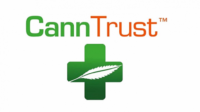 Peter Aceto arrived at CannTrust as the new CEO on October 1 last year along with new board member John Kaken at the end of the month. Several days later the company also announced that it too, like other major cannabis companies including Canopy, was talking to “beverage companies.” It was around this time that illegal growing at CannTrust apparently commenced. Six weeks later, the company announces its intent to also list on the NYSE. Two days later, both the CEO and chair of the board were notified of the grow and chose not to stop it.
Peter Aceto arrived at CannTrust as the new CEO on October 1 last year along with new board member John Kaken at the end of the month. Several days later the company also announced that it too, like other major cannabis companies including Canopy, was talking to “beverage companies.” It was around this time that illegal growing at CannTrust apparently commenced. Six weeks later, the company announces its intent to also list on the NYSE. Two days later, both the CEO and chair of the board were notified of the grow and chose not to stop it.
Apparently, their decision was even unchanged after the video and resulting online outrage about the same over the destroyed crops at the Canopy facility in BC surfaced online.
On May 10, just over a week after the Bioronica purchase in Germany, the first inklings of a scandal began to hit CannTrust in Canada. A whisteblower inside the company quit after sending a mass email to all employees about his concerns. Four days later, the company announced the successful completion of their next round of financing, and further that they had raised 25.5 million more than they hoped.
Six weeks later, on June 14, Health Canada received its warning about discrepancies at CannTrust. The question is, why did it take so long?
The strange thing about the comparisons between CannTrust and Canopy, beyond similarities of specific events and failings, is of course their timing. That also seems to have been apparent at least to board members at Canopy – if not a cause for alarm amongst shareholders themselves. One week after Health Canada received its complaint about CannTrust, shareholders voted to approve the Canopy-Acreage merger, on June 21.
 Yet eight days after that, as Health Canada issued an order to cease distribution to CannTrust, the Canopy board fired Bruce Linton.
Yet eight days after that, as Health Canada issued an order to cease distribution to CannTrust, the Canopy board fired Bruce Linton.
One week after that, the Danish recipient of CannTrust’s product, also announced that they were halting distribution in Europe. By the end of August, Danish authorities were raising alarms about yet another problem – namely that they do not trust CannTrust’s assurances about delivery of pesticide-free product.
Is this coincidence or something else?
If like Danish authorities did in late August 2019, calling for a systematic overhaul of their own budding cannabis ecosystem (where both Canadian companies operate), the patterns and similarities here may prove more than that. Sit tight for at least a fall of more questions, if not investigations.
Beyond one giant cannabis conspiracy theory, in other words, the problems, behaviour and response of top executives at some of the largest companies in the business appear to be generating widespread calls – from not only regulators, but from whistle blowers and management from within the industry itself – for some serious, regulatory and even internal company overhauls. Internationally.
And further on a fairly existential basis.
EDITOR’S NOTE: CIJ reached out to Canopy Growth’s European HQ for comment by email. None was returned.
Correction: This article has been updated to show that the Danish recipient of Canntrust’s product announced they were halting distribution one week after Bruce Linton’s firing, not one day.
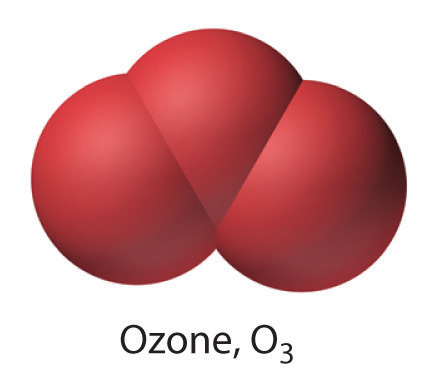
California was the first state to step up to defend consumers from false marketing claims that ozone generators are safe, effective air purifiers. In reality, ozone is a lung irritant, especially harmful to allergy and asthma sufferers. In 2009, California became the first state in the nation to ban ozone generators. The Air Resources Board of the California Environmental Protection Agency states:
Not all air-cleaning devices are appropriate for use — some can be harmful to human health. The ARB recommends that ozone generators, air cleaners that intentionally produce ozone, not be used in the home or anywhere else humans are present. Ozone is a gas that can cause health problems, including respiratory tract irritation and breathing difficulty.
 The regulation took effect in 2009 along with a ban on the sale of air purifiers that emit more than 0.05 parts per million of ozone. The ARB says that anything beyond this is enough to harm human health; however, some experts say that there is no safe level of ozone.
The regulation took effect in 2009 along with a ban on the sale of air purifiers that emit more than 0.05 parts per million of ozone. The ARB says that anything beyond this is enough to harm human health; however, some experts say that there is no safe level of ozone.
The National Institute for Occupational Safety and Health recommends an exposure limit to ozone of 0.1 ppm and considers levels of 5 ppm or higher “immediately dangerous to life or health.”
If you’re shopping for an air purifier, it’s best to avoid ozone generators, especially if you have a respiratory condition. Ozone generators, and ionic air cleaners that emit ozone, can cause asthma attacks in humans while doing little to nothing to clean the air.
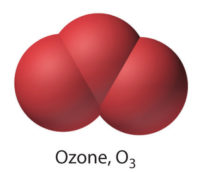 O3 is a free radical, an oxidizer; when it meets any organic molecule floating around it bonds to it and destroys it. In a grow room, organic molecules include the essential oils in cannabis which produce the fragrance. When using ozone within your grow room, too much will not only all but eliminate the smell of your flowers but with prolonged exposure, it begins to actually degrade the cell walls of trichomes and destroy the structure of the glands.
O3 is a free radical, an oxidizer; when it meets any organic molecule floating around it bonds to it and destroys it. In a grow room, organic molecules include the essential oils in cannabis which produce the fragrance. When using ozone within your grow room, too much will not only all but eliminate the smell of your flowers but with prolonged exposure, it begins to actually degrade the cell walls of trichomes and destroy the structure of the glands.
Despite the claims of some manufacturers, ozone does not have an anti-microbial effect in air unless levels far exceed the maximums of the regulation and is therefore harmful humans.
Keeping the grow room clean of mold and bacteria is important, but ozone is not the technology you want to employ to satisfy this goal. Looking into a combination of UVC and Filtration will better meet the goal while keeping both your plants and staff healthy.
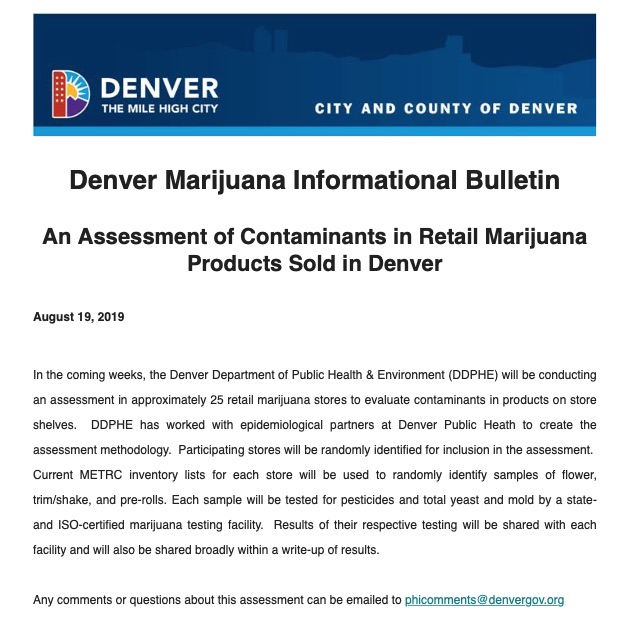
Earlier this month, Colorado cannabis producer Herbal Wellness LLC recalled dozens of batches of cannabis due to positive yeast and mold tests. The Colorado Department of Public Health and Environment (CDPHE) issued a health and safety advisory following the news of microbial contamination.
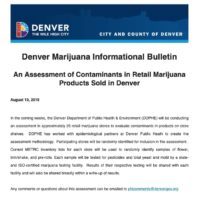 The Colorado Department of Revenue then identified batches of both medical and recreational cannabis produced by Herbal Wellness that were not even tested for microbial contaminants, which is a requirement for licensed producers in the state. Just a few days later, the Denver Department of Public Health & Environment (DDPHE) issued a bulletin announcing their plans to conduct random tests at dozens of dispensaries.
The Colorado Department of Revenue then identified batches of both medical and recreational cannabis produced by Herbal Wellness that were not even tested for microbial contaminants, which is a requirement for licensed producers in the state. Just a few days later, the Denver Department of Public Health & Environment (DDPHE) issued a bulletin announcing their plans to conduct random tests at dozens of dispensaries.
“In the coming weeks, the Denver Department of Public Health & Environment (DDPHE) will be conducting an assessment in approximately 25 retail marijuana stores to evaluate contaminants in products on store shelves,” reads the bulletin. “DDPHE has worked with epidemiological partners at Denver Public Heath to create the assessment methodology. Participating stores will be randomly identified for inclusion in the assessment.”
“Current METRC inventory lists for each store will be used to randomly identify samples of flower, trim/shake, and pre-rolls. Each sample will be tested for pesticides and total yeast and mold by a state- and ISO-certified marijuana testing facility. Results of their respective testing will be shared with each facility and will also be shared broadly within a write-up of results.”